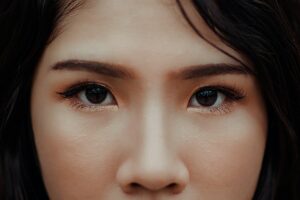High-tech Contact Lenses that Improve Vision and more

Advancement of technology has resulted in wearable vision correction getting smarter and hi-tech. The low-key thin and almost invisible contact lens has become the new magical wonder. It is smarter, equipped with innovative features and has the potency to bring a radical change in vision correction.
This is not a sudden change. The on-going appeal for innovation in contact lens technology has resulted in extensive research and the formation of futuristic contact lenses like:
Telescopic contact lens:
Currently being developed by the Federal Institute of Technology Switzerland, these lenses comprise of miniature aluminium mirrors arranged in a ring around the centre. Thus they work like a polarising filter and magnify objects by bouncing light around and expanding the object size. Wearers see objects getting 2.8times bigger than their actual size. Winking with one eye will enable the vision to zoom in as it happens in a camera. People with macular degeneration will largely benefit from the use of these telescopic
Nano wafer contact lens:
These are the ultimate advancements in wearable sight correction technology. Developed by Baylor medical College situated in Dallas, these super thin lenses are equipped to deliver glaucoma medications to the eye for prolonged durations. They dissolve very slowly thereby allowing small doses of the medicines to be released into the eye. This method is effective as it prevents loss of eye medicines and contamination of the eye.
Augmented reality lenses:
AR is omnipresent. But nothing can be more futuristic than its incorporation into a contact lens. The Innovega designed iOptik system is developed in the form of a contact lens. It can function in the same way as a smartphone and facilitate satellite navigation, video chats, social media etc. Samsung is another company that is looking to amalgamate technology with contact lens to enable remote control of the smartphone. Featuring motion sensors, lenses will make use of blinking and peripheral vision to seek control of the smartphone.
Glucose monitoring lenses:
Highly diabetic people have to monitor their blood sugar levels daily. They need to prick and draw blood from their fingers to facilitate this checking. This is quite inconvenient and disruptive. Google is currently funding a research wherein the smart contact lens will come with an embedded chip. A glucose sensor will be present in it to keep a track of the blood sugar levels without needing to draw blood. Once developed, this smart contact lens could change the course of life for a diabetic.
3D printed lenses:
These contact lenses need extreme precision and accurate specifications as they are made from extremely delicate materials. The thought is there, the process is there yet companies are struggling to make 3D printed lenses a reality. LUXeXcel, a Dutch company, is set to revolutionise wearable sight correction technology. While they are still a long way from gaining success, they are in the process of:
- Working out a procedure to print objects on transparent materials and
- Have a silky smooth surface to suit the contact lens.
While each of these futuristic trends in wearable sight correction technology is still in developmental stages, all of them have the potential to transform perceptions. It is a matter of time when these innovative technologies become a reality.






